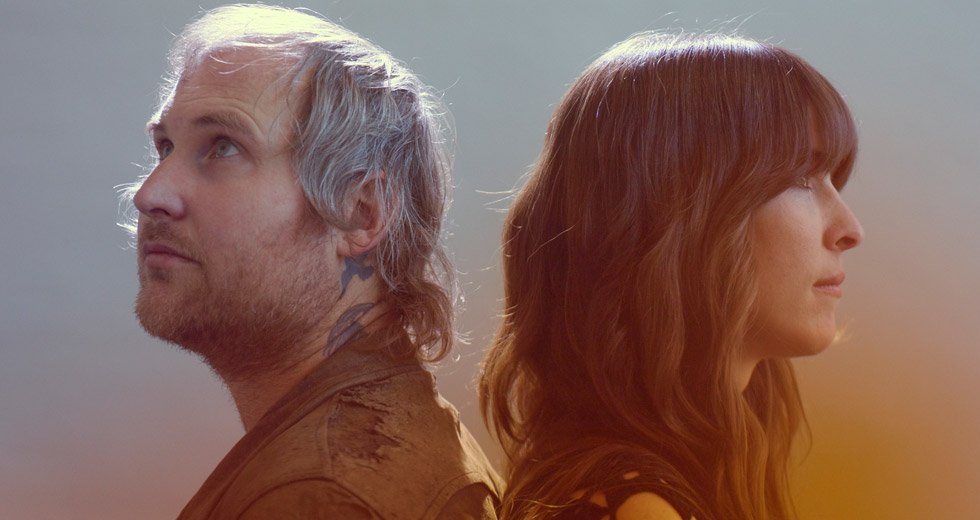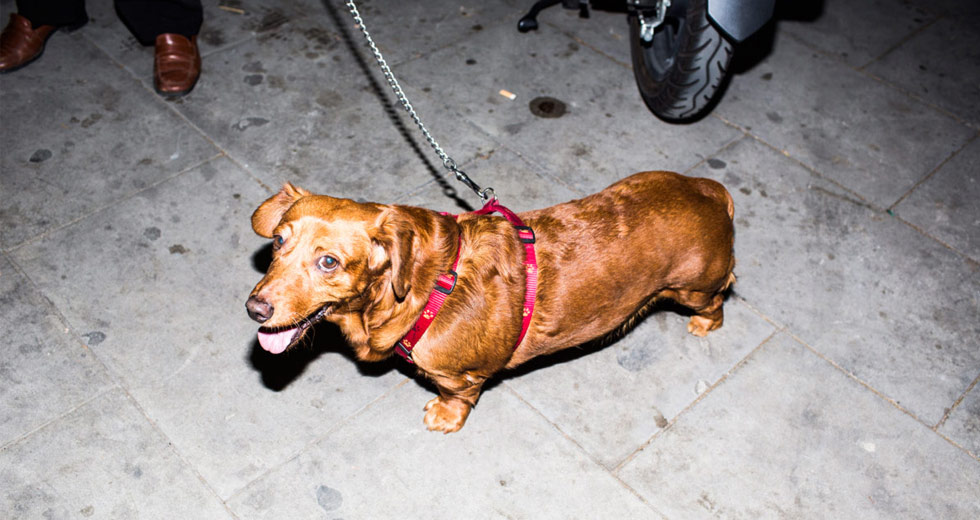Headphone Highlights: Kerri Chandler
Having been at the forefront of the Jersey-based soulful house scene in the US for decades, the iconic Kerri Chandler takes us on a personal journey through the songs that have stayed in his crates during the years. Read his recollections below of deep basslines, smooth groves, Zanzibar nights and heavy soul. And check his his Headphone Highlights show on RBMA Radio for the full audio edition.
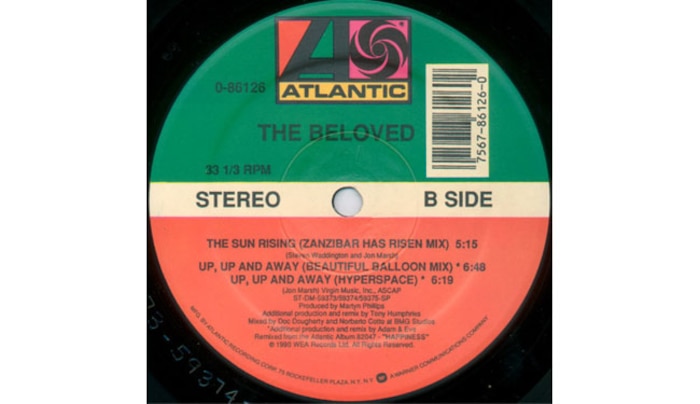
The Beloved - "The Sun Rising (Zanzibar Has Risen)" (Atlantic, 1990)
One I really loved that Tony did was The Beloved “The Sun Rising”. I just loved the idea and the way he did it, the bassline is something incredible to me – how he took something like that and remixed it the way he did. For me, it was a big learning experience to see how you can take something with that sound, and transform it into something so amazing. He was a pioneer, absolutely a pioneer, to the sound that we all did and loved. Hearing something like that, once he’s done it at Zanzibar, was absolutely the proving. It may sound one way in the studio, but once you get to Zanzibar and you hear it through that system, you understood exactly why it was done that way.
I’ve found that you needed more of a club atmosphere to test your songs in, to actually hear what it’s supposed to sound like, compared to what it sounds like in a studio. Because in a studio, you’re trying to make everything a lot more full, you add more things to it, because it’s not as heavy or something. You just try to fill that gap in. But I’ve found that less is more, in this case. Because the less you seem to add, the better it sounds in the club. It’s like all you hear is kicks and basses and snares. You know, certain snares sound better than other snares in clubs, and I couldn’t figure out, ‘why would you use that little snappy 808 thing?’, until I heard it in the club and it’s like, ‘pow!’, I’m like, ‘oh, that’s why!’. And, ‘why does this hi-hat sound better than that hi-hat?’, and it’s an acoustic hi-hat versus an electronic hi-hat. Same thing again – you go into a club, it sounds completely different. The louder something is, even with 808 kicks versus a 909 kick. What’s punchier, what’s warmer, what’s rounder? All of these things made a lot of sense to me, once I took the element away from the studio to the club. And how to balance everything properly so it makes better sense.
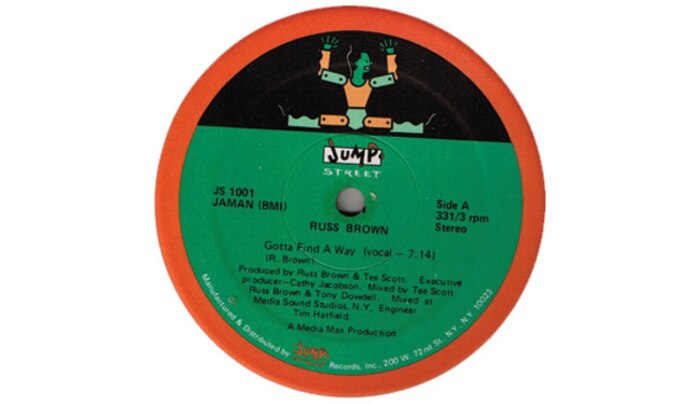
Russ Brown - "Gotta Find A Way" (Jump Street Records, 1986)
Yeah, Russ Brown. To me, that was one of the first real transitions from disco to house, because I’ve never heard anybody make… that really sounded like somebody made it from their house. It sounded like someone took a Casio and just sang over it and ran some beats over it, and I found the actual machine. It’s not a Casio, it’s like a Yamaha or something and you hit the button and that preset comes up. It’s like, ‘you’re kidding me’. The drums come up with those weird, strange cymbals, and it sounds like they just added a vocal on it and a clap track right after that, but it was no different. I actually heard a reel-to-reel version of the original one when I heard Russ playing at this club in New Jersey, and I was just like, ‘that is the coolest damn track I’ve heard, ever’. I’ve never heard an electronic track that sounded like it was made from somebody’s house before. I was like, ‘that really sounded like house music’, like someone took a Casio and just played over the top of things. And when I found out that’s what it actually was, I was just like, ‘this is sick’. And he’s actually getting away, and playing this out and everyone’s starting to play this song, I was like, ‘that’s incredible to me’.
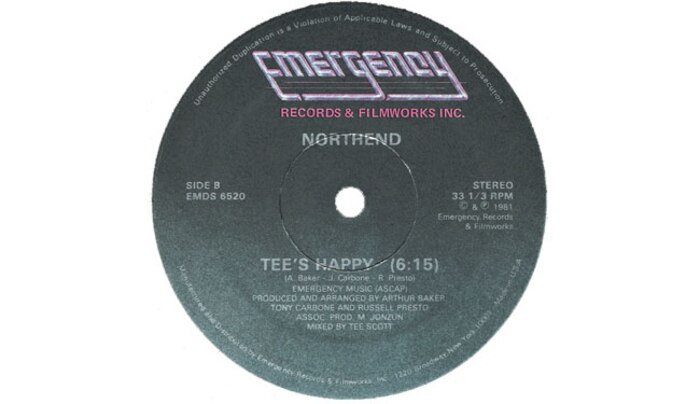
Northend - "Tee's Happy" (Emergency Records, 1986)
Ah yeah, Tee Scott. Tee Scott’s mix is the one I remember the most. If I remember correctly, and I’m going back here because my memory from back then is fading, but that was, wow. I had to have that record, I had to. That was Jump Street, if I remember correctly.
Oh yeah, “Tee’s Happy” is one of my all-time favourite records. To me, that was the reason I really started doing basslines the way I do them. It was just like, something about the tone. It was just like, when that record broke down, it just got away from the acoustic stuff and that bassline, it was just like, “Wait a minute. What machine is that? What is that thing? I need to figure out how he made that sound.” All the reverb around it, and it was just like [imitates the bassline], I was just like, ‘woah, that’s crazy’. And every time I played it, I had two copies, and I would always try to extend that break, so it just ran longer than what it did. And it’s just like it got people crazy, and I used to break it down again. Then after a while, I made my own edits up on reel-to-reel – God, I wish I knew where they were [laughs] – but that’s how we used to play it, but it was just fun. It’s a really fun record.
Yeah, you always brought the real thing, because that was the only thing. Otherwise you had to have an acetate made of your edits. But we’d edit it to reel-to-reel first, anyway, before we had it turned into an acetate. Cuz there was no other real way to do it, unless you went to a studio, and had somebody digitally cut it up, and that was just unheard of at the time, back in the 80s. You had to go to a serious studio to really try and figure that one out.
The reel-to-reels we used to use were the Technics. They actually had Technics reel-to-reels, and they all had pitches – or the Tascam ones, either one – and we would just burn ‘em at… wherever we were, at a studio, we all had reel-to-reel machines, like all of us DJs at the time. And we’d just take ‘em, burn them to the club, and now you have your own testing thing that you can use, rather than going to try and find someone to burn them for you in time for the weekend on an acetate. And that was it. The reels, you can have them as long as you kept your reels clean. Acetates, you play them a few times on a bad needle and it’s gone. It’ll turn white and you can’t play it anymore. But reels, you can always experiment, go back, re-record it, do whatever you want, re-re-edit it. That was a very easy format for us, and it was just like, you knew. All of us kind of knew how to splice and tape things together, because what we all did before that was, like, cassette decks and pausing, doing pause mixes and tapes and things. So reel-to-reel was actually an easier step, honestly.
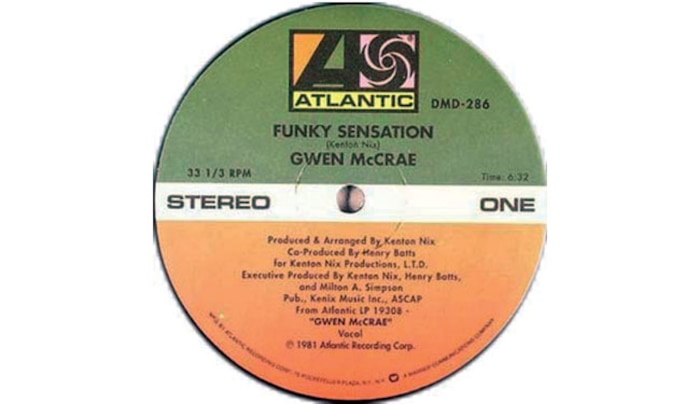
Gwen McCrae - "Funky Sensation" (Atlantic, 1981)
“Funky Sensation”, Gwen McCrae. That to me, was like, I’ve never heard so much personality in a record, ever. The way she came across was like she knew. She made that record hers, it’s like the personality in that record, to me, was all of it, that’s what made it for me. The music is cool, but the way she put her twist on it, it’s almost like it was so personal, and she was explaining to people why this record is a funky sensation. The way it broke down, and the strings [imitates string arrangements]… I’ve never heard anything that made my hair stand up like that record at the time when I was a kid. I was like, ‘I’ve never heard a record like this’. I sat and I would play that record until it turned white. It was a beautiful record and it was put together so amazing, and just to hear hip hop guys cut it all up. To me it was always a personal record until I heard Kenny Dope sample the crap out of it and all these hip hop kids started playing it. It was like, ‘Aw, well, now they’ve found it’ [laughs].
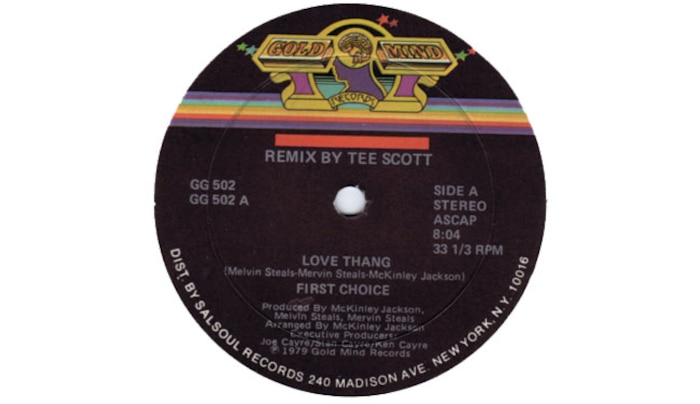
First Choice - "Love Thang" (Gold Mind Records, 1979)
“Love Thang”, oh my god, if “Love Thang” could talk, I mean, the battles we would have at “Love Thang”. Just that alone, and watching dancers. I can’t tell you. It makes women happy, and it makes dancers even happier. That song, I think that thing is timeless, I don’t think it will ever go away. That was also a Tee Scott mix and I love the way he broke things down. It has every element I have loved in a record. To this day, still, when you have all of those elements in a record like that, you can’t go wrong. It just has the right amount of timing for breaks, just enough music, just enough lyrical content to make you go, ‘wow, that’s excellent’, that call and response singing – people want to sing the song back. And when it breaks, people are happy, and it goes right back into what it should be, ending the song with the name of the song. You send people home singing with that song, there’s nothing like it. It’ll stay stuck in your head for days.
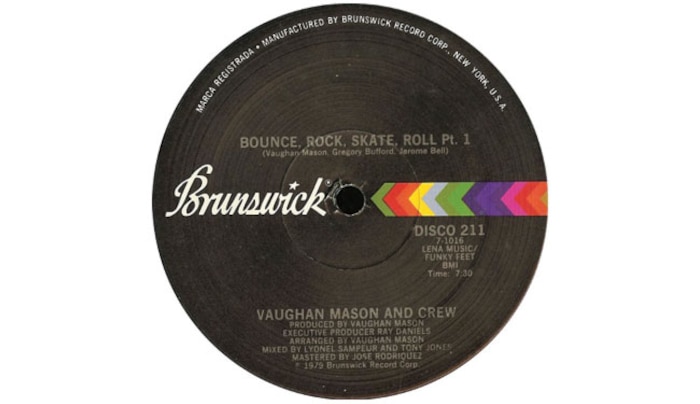
Vaughan Mason And Crew - "Bounce, Rock, Skate, Roll" (Brunswick, 1979)
“Rock, Skate, Roll, Bounce” [sic], when you’re a kid – that’s what we all were, we were all kinda kids – that’s one of the first records I heard. Again, with that bassline, I understood where they got the concept from, it sounded like another version, like an electronic version of “Good Times” by Chic. And even where it broke down, I used to run ‘em back and forth, just to see when it goes, “Come on, come on/and get down”, then the bassline would just go [imitates bassline], and it would be the same thing as “These are all good times”. Same exact arrangement. To me, I was like, ‘one is more electronic sounding, the other one is more acoustic sound’, so I was just like, ‘wow, this is sick’. But what it meant was, in the summertime, I remember when we heard the record, it made so much sense because we were all rollerskating. And even the same thing with “Good Times”, we were all rollerskating to these records, just going around in circles. To hear that stuff at like Twin City, where I grew up in Jersey, there was this huge place called Twin City and the DJ used to play all these records and they would break and do these crazy things, and everyone would just be doing mad skating. Even Abi, Abigail Adams, she used to skate, like all of us, like from Movin’ Records. She was one of the baddest skaters on the fucking planet. And I don’t if that many people know that, but she was… We all had our thing, but I was always into music, like ‘what is this guy playing’. I don’t even remember who the DJ was, but it was just like always incredible.
I’ve never played at a roller rink. That’s one thing that I’d love to try, actually. I did a roller disco party for my daughter’s birthday. And we all dressed up, like we had platform shoes, like the 70s and stuff, and I had like bell bottoms on and I just pulled my afro out [laughs]. It was fun. And we all just had a roller skate. But that’s the only time. I rented out the rink just to see if I could do it and have fun with it, and it was fun. I had a blast with that.
To me, early on, especially with house, it was always about how the bassline moves things. The bassline, to me, was the groove of the song. Like for all of these songs, matter of fact, that’s the one thing I loved about all of these songs. That the bassline drove the song for most of these songs. And that, to me, this is why these are all my favourites, and I can still pick them up to this day, and go, ‘that song’s bad as hell’. To me, that’s what it was, there’s nothing else to it, that’s the groove of the song: the drums and that bassline.

Gypsymen - "Hear The Music" (E Legal, 1990)
Todd Terry? Todd, same thing again, his drums and the way he puts things together. I love most of his unreleased things, so it’d probably be one of those guys. The one that really stands out to me, what’s the name of that thing [sings], that came out on E Legal. Gypsymen “Hear The Music”. My god, same thing, the bassline and those drums. It’s like, I can’t tell you how many cars I would hear, just passing by, it was just automatic, like you know what that was. It was like it was an invasion of just this beat that had come in to snag your ass. It was amazing. Everywhere we were, in East Orange, especially, every car that went by it was just house music. And it was so much fun to just hear people playing it down the street, and it was always making me laugh when I heard something of mine going down the street. Because it’d be like “My My Lover” or “Get It Off” or something. And it’s just like, you can hear it for blocks! People would just be walking down the street, and it’s funny because everybody seemed to compete with playing this stuff. I’d always laid back in the background, I had a lot of friends, but strangers playing music like this. I was so happy to be in that. And that’s what we’d all do, we’d all run to Zanzibar and go the next day to Movin’ Records to try and find these records, like, ‘what is that? what did Tony play? what is this, what’s happening? what’s going on back there?’. We’d all go home and throw our parties. Or the places that we would DJ at. I was at Club America, so then every weekend, I’d spend all the money I had that I’d made the week before to buy records and go back and do it all again. That was the culture, it was just a great energy.
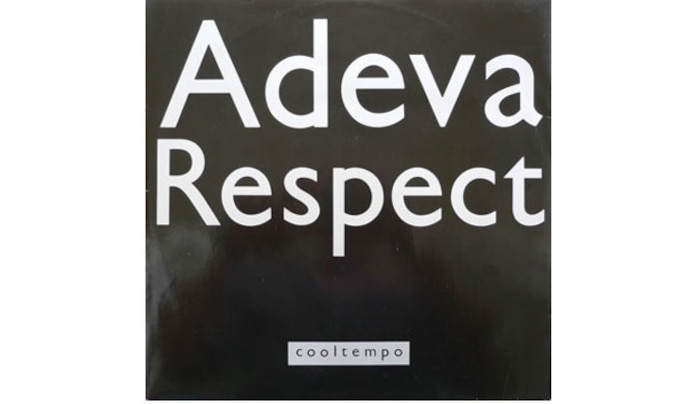
Adeva - "Respect" (Chrysalis/Cooltempo, 1988)
Oh yes, Smack, the whole damn crew. All those boys, I don’t know. Something about that time frame and the way they did things, it just made so much sense. They were to me, the next level into where we were all going anyway. Smack took it and made it gritty, they made it really gritty. And they made it in a way where it made sense, and it made it musical somehow. But they made it so it had that bounce. My first one, where I got really introduced to Smack probably had to be Adeva “Respect”. And to me, that’s like, when I heard that bassline, I was just like, that is the essence of house. The basic bassline of house, the way the [imitates sound effects], same thing. The whole TX81Z bass sound. That one particular bass sound kind of defined house for me. I used that bass out the ass, the same way. To me, it seemed that was the start of that tone.
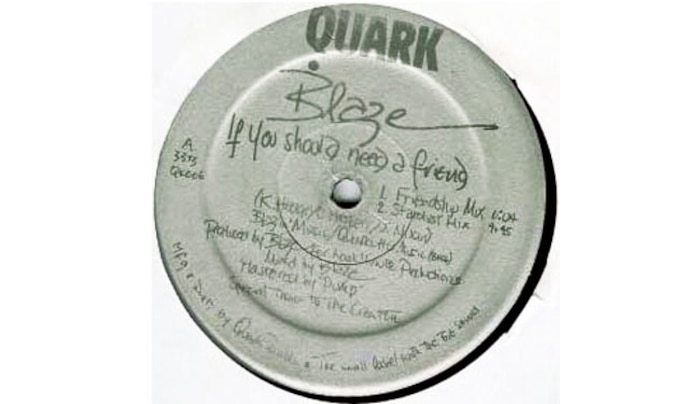
Blaze - "If You Should Need A Friend" (Quark, 1987)
To people that had everything to do with the way the vocals were set up were Blaze and the Burrell brothers. I was going to say Bas Noir, but Burrell brothers brought Bas Noir into the scene, so that would be them. But they had a way of making melodies. They just had a way to make you feel what they were saying inside. Like the soul and the production, it was so, I can’t say basic, it was complex for the way it was put together in the genre that we were doing. It had arrangements, it had builds, it had you know, structure.
It wasn’t just two or three basslines coming in, and that’s all the track was. It was more like, there’s a structure, there’s a chorus, there’s a bridge, there’s a vocal. It would break back down into the verse again, and then the chorus, and then the outro. It had structure, and that’s what they did for house for me. And I think that’s what it was. Probably “If You Should Need A Friend”. That to me, to this day, it influences me when I hear it. It just makes me want to cry. It chokes me when I hear that.
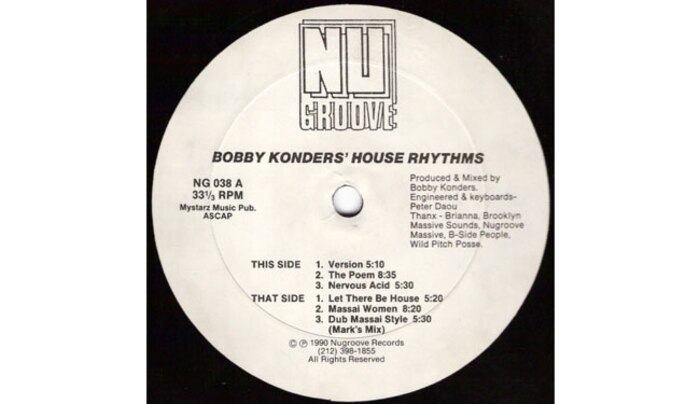
Bobby Konders - "The Poem" (Nu Groove, 1990)
Bobby was something of a wizard, that’s the best way to describe. Bobby was always into reggae, and to this day he’s known for that. Bobby Konders is like one of the pioneers of reggae in that whole style, but when I met Bobby, he played house and he played reggae. He used to do both. And just to hear that man play the way he did, he played everything that night and it was the most incredible. Still to this day, one of the most incredible DJs I’ve ever heard play. And it’s just like, “Wow, where are you finding these records from? Where is this stuff coming from?” And when he did “The Poem”, to me it was just incredible. The same thing with the bassline and the way the melodies went. Peter Daou and all of these people, it was just like ‘wow, these people are really talented, the way they play’. And the way they put things together is really incredible to me, but with that Nu Groove EP, it was so far ahead of its time. That was the most melodic song on there, but if you played it, the flipside, now, it sounds… I mean, I know people that have sampled that record 20, 30 times and making things now is like that whole acid style movement that’s coming up now. Somehow he found a way to take reggae dub and turn it into house, somehow.
You know, we all had our thing to figure out what we were doing, but same thing, he found his niche. When he did his reggae thing… it was so funny because when I met him, I never expected him to look like that. He looked like a hippie, but he’s like the biggest reggae dude on the planet, and I’m absolutely happy to get to know Bobby that well. And he helped me a long way in the beginning. I didn’t know anyone. Two people that helped me to meet everyone was Bobby Konders and Camacho. They introduced me to everybody in the business after that.
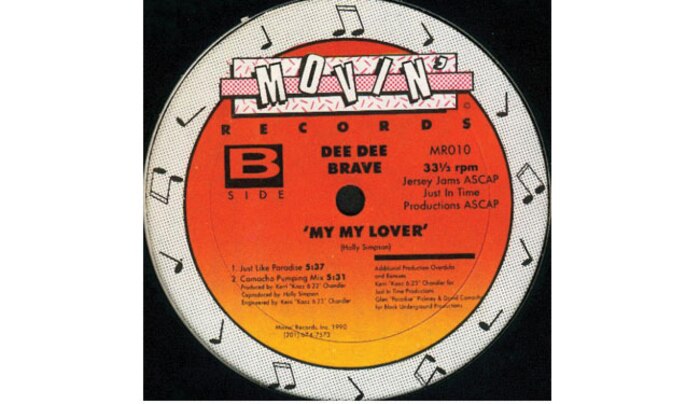
Dee Dee Brave - "My My Lover (Camacho Pumping Mix)" (Movin' Records, 1990)
Me and Camacho, that was my boy, that was like family to me. I really miss him. You know what the funny thing is? He actually helped me to do the mix on “My My Lover”, too. And a lot of people didn’t know that either. Like the B-side for it, it actually has Camacho’s name on it. I think that’s how I remember him most, like him being there, the first time he came to the studio. And it’s just like the most happy I think I’ve ever seen him was sitting behind a mixing desk. When we did the mix, we actually did it together, sitting next to each other, and he would flip some switches and say, “Yeah, we should take this piece back.” We’d go back and maybe take another section out of something. Camacho was a master at the tape deck, too. So he’d chop and edit things, and we’d move it up and go to the next section and take the tape back, bring it back to the beginning and do it again.
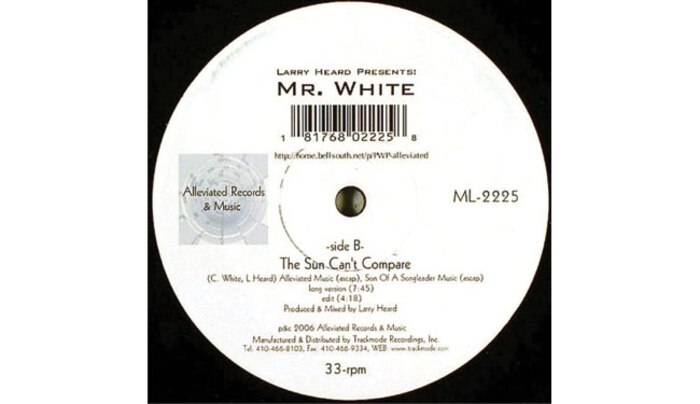
Larry Heard pres. Mr White - "The Sun Can't Compare" (Alleviated Records, 2006)
Well, you know what’s really funny? I was gonna say my favourite is “Can You Feel It”, like of all time, but over the summer, I was playing at DC-10 – I’m one of the residents there now – and I had such a great time, and I think the one that really circled the wagon and started again for me was “The Sun Can’t Compare”. When I played that this summer, it was like it was all new again. And the timing when I played it, the sun was just coming out, because it was an outside kind of thing, and the sun just started shining the minute I played that record. And I was just like ‘wow’, and everyone’s hands just went up and everyone was so happy. The look on people’s faces when I played it, it was just like, ‘wow, he’s actually playing “The Sun Can’t Compare”’, and it’s just like, and I got to play that, it was the first time I played at DC-10, and I was so skeptical about Ibiza at the time, but that one song in that one instance changed my entire perspective for the summer. And I was just like, ‘this is going to be a really amazing year’.
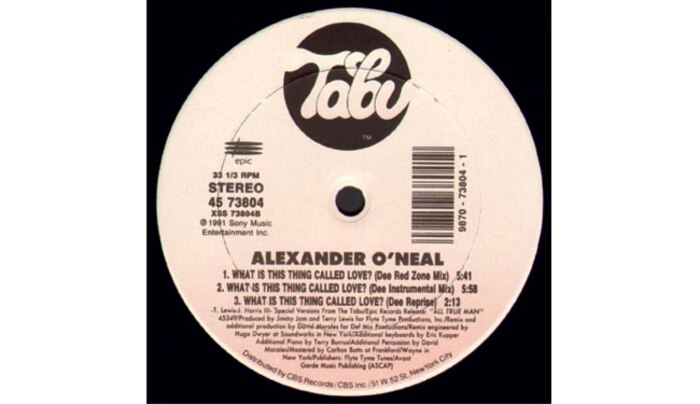
Alexander O'Neal - "What Is This Thing Called Love? (Dee Red Zone Mix)" (Tabu, 1991)
Larry Heard is Mr Chicago. Same thing, I’m very blessed to know Larry. I respect him a lot, and what he’s done, the way his tones are and his sounds, same thing again, it’s all for me about the bassline. And the same thing for Frankie Knuckles and David Morales, the one song that really changed my idea about how basslines work was, what was the name of that? Alexander O’Neal “This Thing Called Love”. That song, the way that bassline went, the tones, the strings in that thing. When I heard it the first time I was just like, ‘nobody’s beating this cat’s basslines’. Dee's [David Morales] got basslines down. I’ve never heard nobody put no shit down like that. And it sounded the same way with like Shatoshi Tomiie, and all of these things with tears, and I’m like ‘it’s all about the damn bassline’. And that’s when I learned, right there from then on, if you get a melody, a proper melody with the bassline, like “No Way Back” and all this shit, it’s like, that to me, if you can remember a song, that’s what you remember the most about it, the bassline. Or some kind of hook going through the song. But it seems to me, the more people can recognise and sing back a bassline, that’s how people describe the song. It’s like, you know that song that goes, [imitates bassline], ‘oh, I know what you’re talking about’. And that’s the key to it.
- Kerri Chandler, 2012
